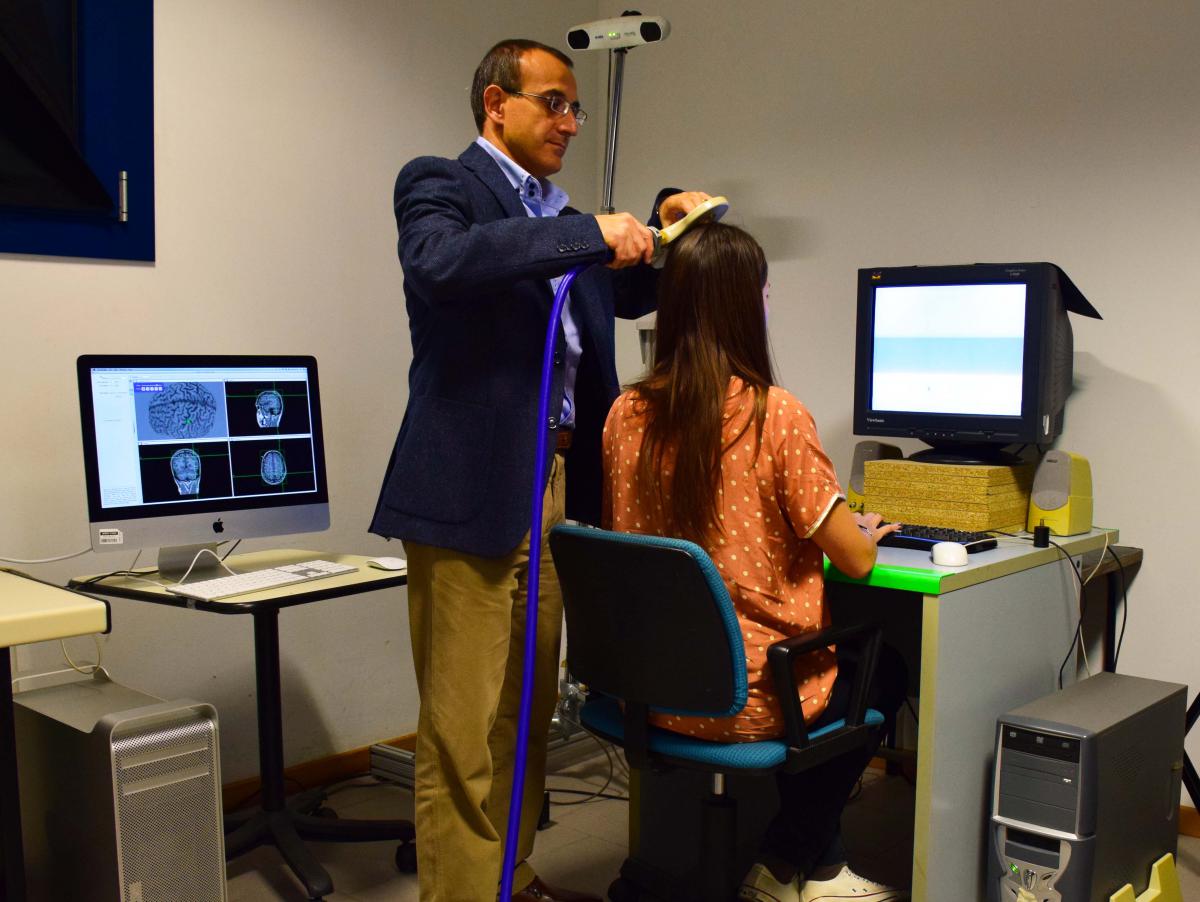TMS
"Transcranial magnetic stimulation (TMS) is a neurostimulation and neuromodulation technique, based on the principle of electromagnetic induction of an electric field in the brain. This field can be of sufficient magnitude and density to depolarize neurons, and when TMS pulses are applied repetitively they can modulate cortical excitability, decreasing or increasing it, depending on the parameters of stimulation, even beyond the duration of the train of stimulation. This has behavioral consequences and therapeutic potential." |
|
What is TMS? |
Mechanism of action
While other brain stimulation techniques deliver electricity to the brain from outside the head, TMS bypasses the obstacle posed by the tissues enclosing the brain (e.g. the bones of the skull) by inducing electrical currents in brain tissue via powerful magnetic fields. In fact, based on Faraday's law, a changing magnetic field is able to provoke the flow of electricity through a conductive medium, in this case the cerebral cortex. The magnetic fields needed for this phenomenon to take place are generated through apposite instruments, namely coils, which have different shapes and dimensions. The physical characteristics of these tools, along with other factors such as the intensity of the stimulation, can influence the depth and extension of the brain stimulation.
Unlike transcranial electrical stimulation (tES), which modulates spontaneous brain activity, TMS can directly induce action potentials, the electrical events that allow neurons to communicate digitally. Because of this, some of the perceptual and behavioral responses triggered by TMS can be immediately and dramatically visible and recordable. For instance, if TMS is applied over select areas of the visual cortex, it is possible for the subject to experience phosphenes, visual percepts of varying color and shape. If TMS is instead applied over those parts of the motor cortex that govern hand movements, it will be possible to cause the involuntary twitching of different fingers. Depending on parameters such as the intensity, duration, and frequency of the TMS pulses delivered to the cortex, the activity of brain regions of interest can be temporarily either increased or decreased.
Safety
Although TMS is recognized to be a safe method for stimulating the brain, some precautions need to be taken in order to minimize the risk of adverse effects. For instance, guidelines recommend not to deliver TMS to subjects that are carriers of devices such as pacemakers or cochlear implants. It is also unadvisable for people that have a family history of epilepsy or are taking certain medications to undergo TMS, as there is a small chance that it could trigger seizures.
Effectiveness
TMS has been shown to be a powerful tool not only for research applications, for example in studies that investigate the underlying mechanisms of perception, but also for treatment of several disorders that affect brain and behavior, including motor and psychiatric disorders. Moreover, TMS has the potential to be used for cognitive enhancement even in healthy populations.






